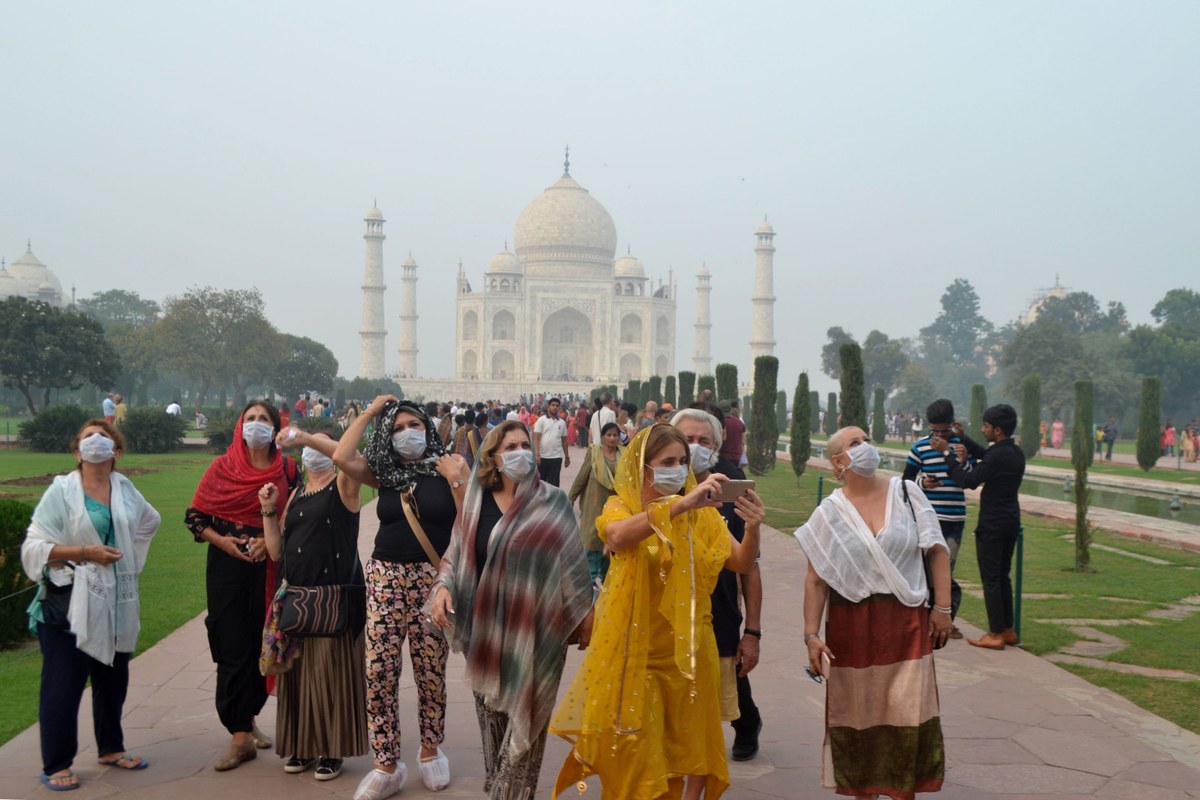Indian government’s inaction fuels pollution crisis

Roads in the Indian capital New Delhi again saw a restriction on private cars on Monday. This measure, which is of doubtful and very limited impact on cutting air pollution, kicked in almost a week after the entire north of India, not just the capital, was transformed into a giant, open-air gas chamber, with extremely toxic fumes asphyxiating the nearly half a billion people that live in the region.
Air pollution gauges across thousands of cities and villages in the Indo-Gangetic Plain have been hitting 999 parts per million (ppm) as against a safe level of 60 ppm, and they cannot go any higher only because they are capped at 999. New gauges are clearly needed to measure exactly how bad the pollution is, especially for the fine particulate matter below 2.5 millimeters (PM2.5), which are among the most harmful bits of air pollution, as they get through the membranes of the lungs and enter the bloodstream.
The World Health Organization (WHO) says the average exposure through the year to PM2.5 should not exceed 10 micrograms per cubic meter of air. However, a study published in the respected medical journal Lancet showed that, in northern India, the peak levels breach the overall 1,000 ppm mark and the average exposure is at least 13 times greater than the safe limit prescribed by the WHO. The study, of data collected in 2017, said that, while India’s average exposure per year is about 90mcg, the states of Haryana, Uttar Pradesh, Bihar and, of course Delhi, have mean levels of 128mcg.
The study goes on to say that 1.24 million deaths, or one in every eight deaths that occurred in India in 2017, were due to air pollution. In addition, nearly 40 million people were afflicted with the long-term impacts of air pollution, which is reflected in India’s disability-adjusted life years. India accounted for more than one in four of all such afflictions around the world in that year. In addition, every year India also sees hundreds of millions of cases of bronchitis, asthma and other cardiopulmonary diseases, which are blamed on the toxic fumes that constantly envelop the country at about the same time annually.
Ironically, but perhaps not surprisingly, the northern Indian belt, which is the worst-hit by air pollution, is also the poorest part of the country, meaning it is the weakest and poorest sections of Indian society that have to bear the brunt of the dangers of air pollution.
Ironically, but perhaps not surprisingly, the northern Indian belt, which is the worst-hit by air pollution, is also the poorest part of the country
Ranvir S. Nayar
For the past decade or so, it has become an annual phenomenon in India, with a place on the calendar. Each year, around this time, the whole of India celebrates Diwali, the festival of lights, lighting millions of lamps and setting off firecrackers for almost a week. The day after the most important day of Diwali, the entire area gets covered with a bitter and acidic smog. Diwali also coincides with the time of year when farmers in the area, numbering several hundred million, clear their fields in preparation for the planting of winter crops — and the easiest and least expensive way for them to do this is by burning the stubble of the previous crop. This, along with automotive, industrial and domestic pollution, adds up to make the annual smog.
None of these events are unexpected or unknown, yet the Indian government has failed to take any medium or long-term steps that could really make a difference. It is only when the situation becomes unbearable, as it is now, that the government introduces short-term measures, such as bans on cars moving in the capital, which are of extremely dubious value in combating this menace. Once the situation improves several weeks later, when the winds from the northwest pick up and clear the smog, the issue is not just off the media agenda, but is also far down the government’s list of priorities. In fact, during the current crisis, the only thing the politicians have done is blame each other, especially as the state of Delhi is governed by an opposition party.
The government, especially at the federal level, has been highly insensitive in its response to the crisis as, instead of initiating measures to curb pollution or improve health facilities to limit the impact of air pollution, India’s health minister tweeted about the benefits of eating carrots to prevent night blindness; prompting responses from some that the air pollution had led to “day blindness” too. India’s environment minister took the time to tweet about listening to music in the mornings instead of addressing the burning issue.
As a result of the lack of any planning or measures to curb air pollution at its sources, the situation across India has only worsened over the past decade. Now, New Delhi has replaced Beijing as the world’s most polluted capital, notably because the Chinese leadership has — at the city, regional and national levels — taken its health emergency seriously and taken several measures to curb air pollution dramatically across vast swaths of China.
In many ways, it seems that China’s leaders are actually more sensitive to their citizens’ well-being and the needs of the country than the government of the world’s largest democracy. Fortunately, protests have broken out in New Delhi against the government’s inaction. Hopefully, the noise and sight of these protests will reach the ears of the environment minister and the eyes of the health minister.
- Ranvir S. Nayar is the editor of Media India Group, a global platform based in Europe and India that encompasses publishing, communication and consultation services.









































